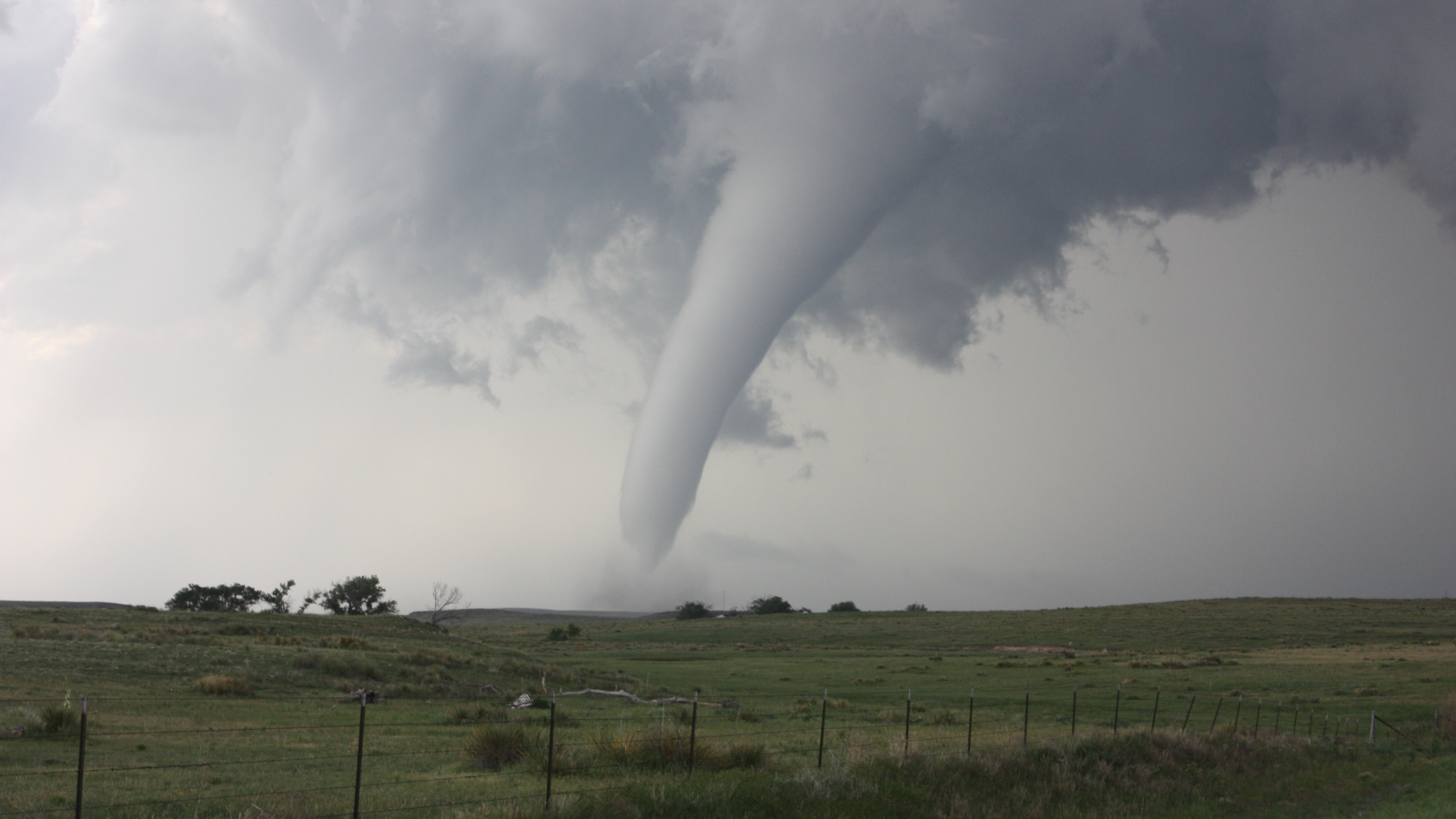Tornado Safety Tips

On average, over 1,000 tornadoes are reported in the United States every year. While they can happen at any time, tornadoes are more likely to form during the spring and summer months, particularly March through June. Weather patterns are unpredictable, but understanding the dangers of tornadoes and the damage they can cause is crucial when it comes to protecting your home and family.
How do tornadoes form?
Tornadoes are rotating columns of air that form from severe thunderstorms known as supercells. These powerful storms occur when warm, moist air on the ground mixes with cooler air above, creating funnel-shaped, spinning clouds. Tornadoes are among the most violent storms, capable of producing deadly winds that can destroy buildings, uproot trees, and flip heavy objects.
Preparing for a tornado
Create an emergency plan
If severe weather is approaching, it’s important to be prepared. Communicate with your household about what to do during a tornado, where to go, and what to bring. Whether your safe place is an enclosed closet in the basement or an underground storm shelter, it’s wise to prepare an emergency kit. Include essential items like bottled water, medications, flashlights, a first-aid kit, and extra batteries or wireless chargers in case of a power outage. Including helmets in your emergency kit is a smart precaution, as most tornado injuries are from head trauma.
Know your safe place/shelter
Decide where your safe place will be before a tornado arrives. Identify the safest spot in your home and make sure all family members knows where it is. Generally, the best places are a basement or an interior room on the lowest floor of your home, like a closet or bathroom. Avoid sheltering in rooms with doors or windows.
If you live in a mobile home, it’s especially important to have a shelter or safe place. Mobile homes cannot withstand the forces of a tornado and can be easily lifted or flipped due to their structure. Find a nearby storm shelter or stay with a friend in a secure home if tornadoes are expected in your area.
Prepare your home
Secure loose outdoor items like furniture, playgrounds, and trampolines. It might also be wise to review your insurance to be reminded of what type of storm damage your policy covers. Whether you have homeowners, renters, or manufactured home insurance, your agent can answer any questions you have about your coverage.
Know the difference between a watch and warning
A tornado watch means weather conditions are favorable for a tornado to form. It’s a “heads up” to stay alert and be prepared. Think of a tornado watch as having all the ingredients for a cake laid out on the kitchen counter. The conditions are ideal for baking the cake, but you haven’t started mixing or baking yet.
A tornado warning means a tornado has been spotted or indicated on the radar. It’s an urgent call to take action immediately and get in your safe place or shelter. A tornado is either happening currently or about to happen. Think of a tornado warning as the cake being in the oven and starting to rise. The cake is actively baking, and you need to be ready to take it out soon.
During a tornado
Take immediate action
Tornado sirens are typically activated by local authorities when a tornado has been spotted or indicated on the radar. If you hear sirens or receive a tornado warning notification, this is your sign to take action quickly and seek shelter immediately. If there’s no nearby building when a tornado warning is issued, lie flat in the nearest low area, like a ditch, ravine, or culvert.
|
After a tornado
Be cautious in damaged areas
After a tornado, it’s important to continue monitoring local news and weather sources for information on the aftermath and any additional warnings. Drive only if necessary and be aware of road hazards like fallen trees, damaged power lines, and debris. When you return home, check for damage, gas leaks, and electrical hazards. If you smell gas, shut off the main valve immediately and contact authorities. Follow instructions from emergency personnel and avoid entering dangerous areas.
Filing insurance claims
If your home or property was damaged from a tornado, notify your insurance company as soon as it’s safe to do so. Take clear photos and videos of the damage. Capture every detail, from broken windows to roof damage, if it can be done safely. It’s important to understand your coverage details, including deductibles and exclusions; this will help you know what to expect during the claims process. If possible, make temporary repairs to prevent further damage.
Does Homeowners Insurance cover tornado damage?
Most standard homeowners policies generally cover storm damages to your home and personal belongings caused by a covered loss. However, coverage details can vary, so it’s important to review your policy. Some policies may also cover additional living expenses if your home is unhabitable. Always check with your insurance agent to understand your coverage.
Severe weather events are nothing to take lightly, and being prepared can make a significant difference in recovering from a tornado’s impact. Alfa® is ready to respond if your home or property suffers weather damage. If you’re an Alfa customer, you can report a claim online, on the Alfa2Go® mobile app, or call 1-800-964-2532. To learn more about homeowners coverages, reach out to an agent near you.
All coverages are subject to deductibles and policy limits. This is not an insurance policy. It is intended only to provide a general description of Alfa Insurance® and/or its product lines and services. An actual policy contains the specific details of the deductibles, coverages, conditions and exclusions. Your Alfa® agent can explain the policy and benefits and answer any questions you may have before you buy.